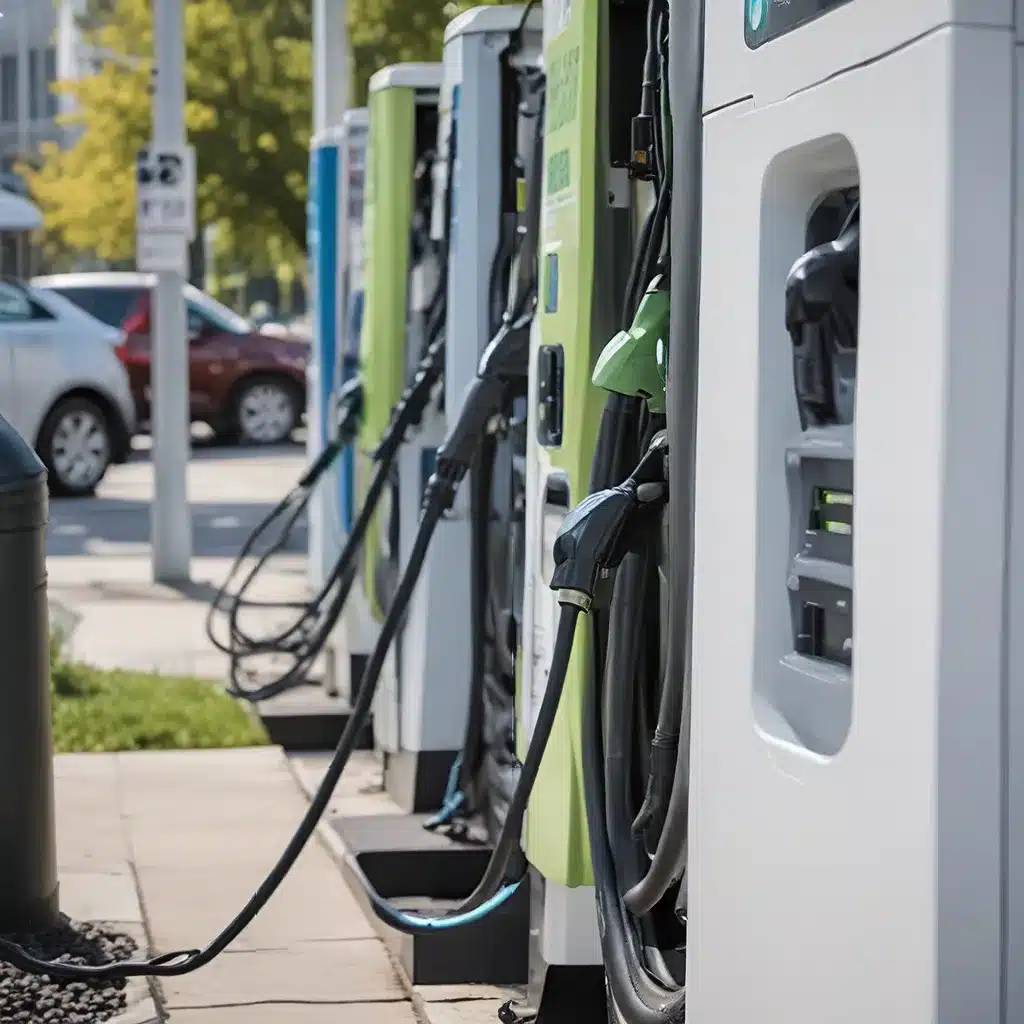
As someone passionate about sustainability and the future of our planet, I’ve always been fascinated by the potential of electric vehicles (EVs) to revolutionize the way we move. But let’s be real – the path to widespread EV adoption isn’t always smooth sailing. There are a lot of moving parts, from government policies to consumer behavior, that can make or break the transition to a cleaner, greener transportation system.
That’s why I’ve been digging into the latest research and insights on this topic, and I’m excited to share what I’ve learned with you. In this article, we’ll explore the key policy levers that can drive the decarbonization of transportation through the adoption of electric vehicles. Buckle up, folks, because this is going to be a wild ride!
Understanding the EV Landscape
Before we dive into the policy side of things, let’s take a step back and look at the big picture. The U.S. transportation sector is currently responsible for a whopping 29% of the country’s greenhouse gas emissions, according to the most recent data. That’s a huge chunk of our carbon footprint, and it’s an area that’s ripe for improvement.
Enter electric vehicles. EVs have the potential to dramatically reduce emissions by replacing gas-guzzling internal combustion engines with clean, renewable electricity. In fact, studies suggest that EVs can reduce greenhouse gas emissions by up to 60% compared to traditional gasoline-powered vehicles, depending on the source of the electricity used to charge them.
But here’s the catch: EV adoption is still relatively low, with only around 5% of new vehicle sales in the U.S. being electric as of 2022. That means we’ve got a long way to go to make a dent in the transportation sector’s carbon footprint.
Policy Levers for Driving EV Adoption
So, what can we do to accelerate the transition to electric vehicles? That’s where policy comes into play. Governments at all levels have a variety of tools at their disposal to incentivize EV adoption and support the necessary infrastructure. Let’s take a closer look at some of the key policy levers:
Incentives and Rebates
One of the most effective ways to boost EV adoption is through financial incentives. Many state and federal governments offer tax credits, rebates, or other financial incentives to make EVs more affordable for consumers. These can significantly reduce the upfront cost of purchasing an electric vehicle, making them more accessible to a wider range of buyers.
For example, the federal government in the United States currently offers a tax credit of up to $7,500 for qualifying EV purchases. Some states like California and New York go even further, providing additional rebates or incentives on top of the federal program.
Infrastructure Investments
Another crucial policy lever is investing in EV charging infrastructure. Without a reliable and accessible network of charging stations, the adoption of electric vehicles will be severely limited. That’s why many governments are pouring billions of dollars into building out charging infrastructure, both at public sites and through incentives for private businesses to install chargers.
The Bipartisan Infrastructure Law in the United States, for instance, allocated $7.5 billion to create a national network of link text=”EV charging stations” along highway corridors and in communities. This will be a game-changer for EV drivers, ensuring they can easily charge their vehicles wherever they go.
Regulations and Standards
In addition to financial incentives and infrastructure investments, governments can also use regulations and standards to drive EV adoption. This might include mandates for automakers to produce a certain percentage of zero-emission vehicles, or requirements for new buildings to include EV charging capabilities.
For example, California has set a goal of 100% zero-emission vehicle sales by 2035, which will virtually eliminate the sale of new gasoline-powered cars in the state. Other states are following suit, creating a patchwork of EV-friendly policies across the country.
Education and Awareness Campaigns
Finally, governments can play a key role in educating the public about the benefits of electric vehicles. By launching awareness campaigns and providing resources to help consumers understand the advantages of EVs, policymakers can overcome barriers to adoption and build a more informed and engaged market.
Some states, like Minnesota, have invested in public education initiatives to highlight the link text=”environmental and economic benefits of EVs”. These efforts can dispel myths, showcase real-world use cases, and empower consumers** to make the switch to electric transportation.
The Evolving EV Landscape
It’s important to note that the EV landscape is constantly evolving, with new technologies, policies, and consumer trends emerging all the time. Ongoing research and active debates around topics like battery performance, charging infrastructure, and vehicle affordability suggest that the path to widespread EV adoption is far from set in stone.
Experts in the field may have differing opinions on the best policy approaches or the pace of EV adoption. Some believe that bold, aggressive policies are necessary to drive rapid change, while others argue for a more gradual, market-driven approach.
Regardless of the specific strategies, it’s clear that tackling the transportation sector’s carbon footprint is a critical component of our broader efforts to combat climate change. And electric vehicles, supported by smart policies, offer a promising solution that we can’t afford to ignore.
So, what do you think? Are you as excited about the potential of EVs as I am? I’d love to hear your thoughts and perspectives on this important issue. Let’s keep the conversation going and see how we can accelerate the transition to a cleaner, greener future for all.

